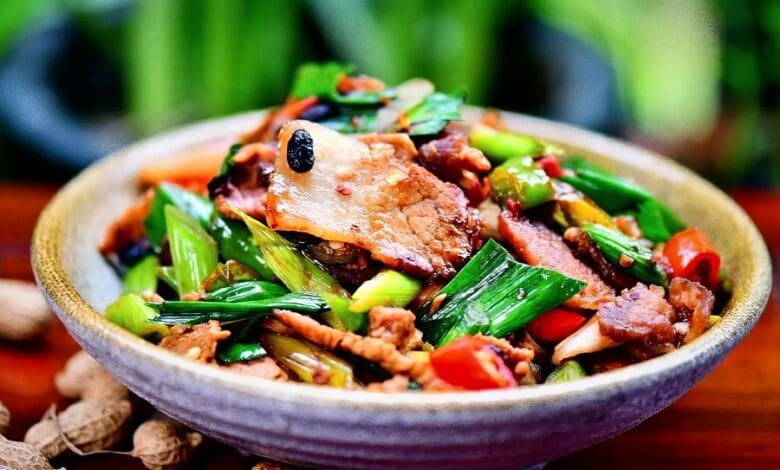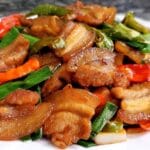Twice-Cooked Pork Belly (回鍋肉, Huí Guō Ròu) is a traditional Sichuan dish. Hui Guo Rou literally means “meat that has returned to the wok.” When properly prepared, the dish does not have an overly fatty taste. In this recipe, part of the fat is removed from the pork belly during the boiling process.
Contents:
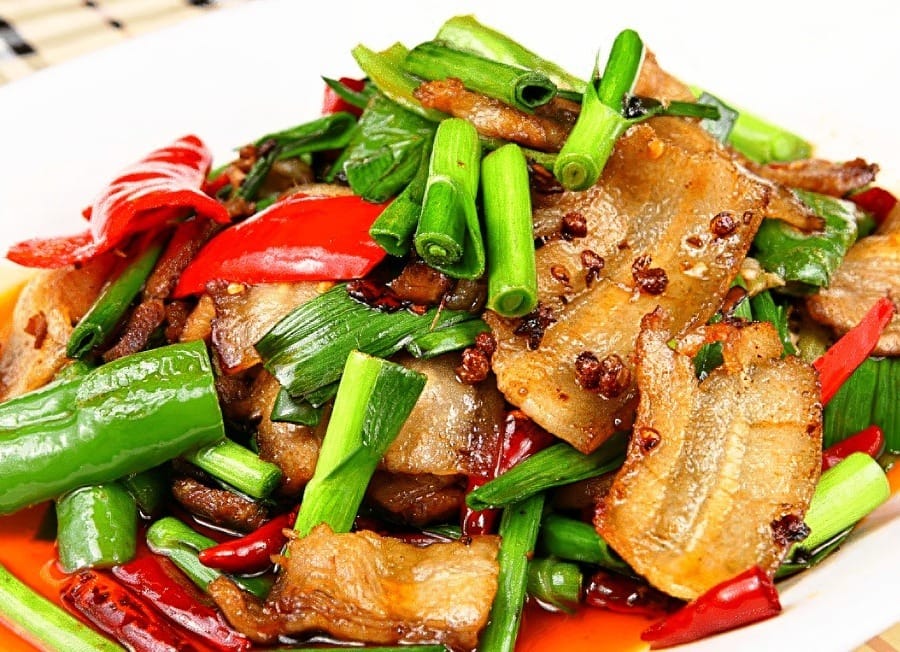
It is also known as Ao Guo Rou (熬锅肉) and, in many areas of southern Sichuan, it is referred to as Burst Meat (爆肉 Bao Rou). The recipe is often adapted to local preferences, leading to many variations of the dish. However, the basic method and the use of Sichuan pepper and doubanjiang are almost always preserved.

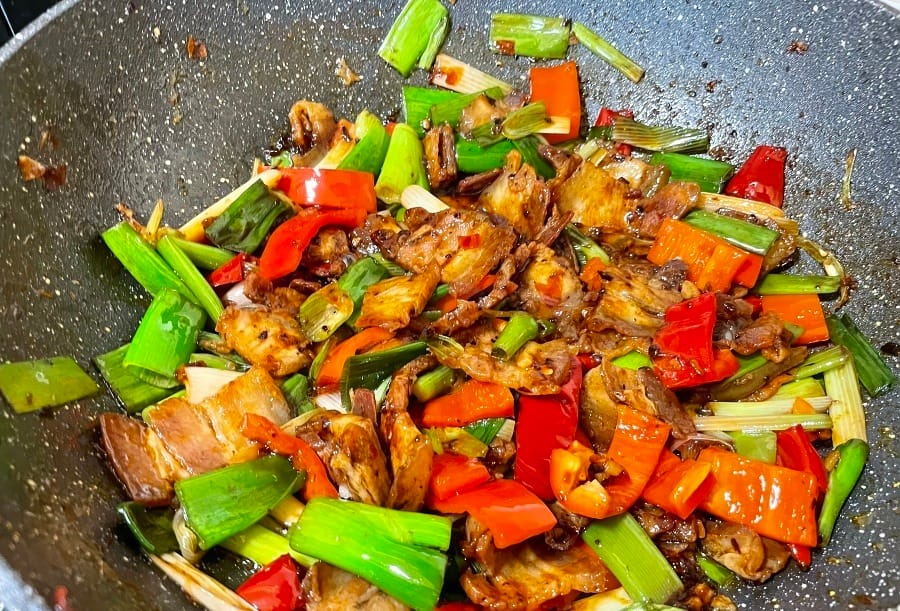
History
The history of this dish dates back to the Song Dynasty (12th century), when it was invented by farmers as a way to use leftover boiled meat from ancestor-worship ceremonies. Over the years, the recipe for twice-cooked pork belly evolved, with many restaurants and households adding their own ingredients. Today, this dish is so popular that it can be found on nearly every menu in Sichuan and throughout China.
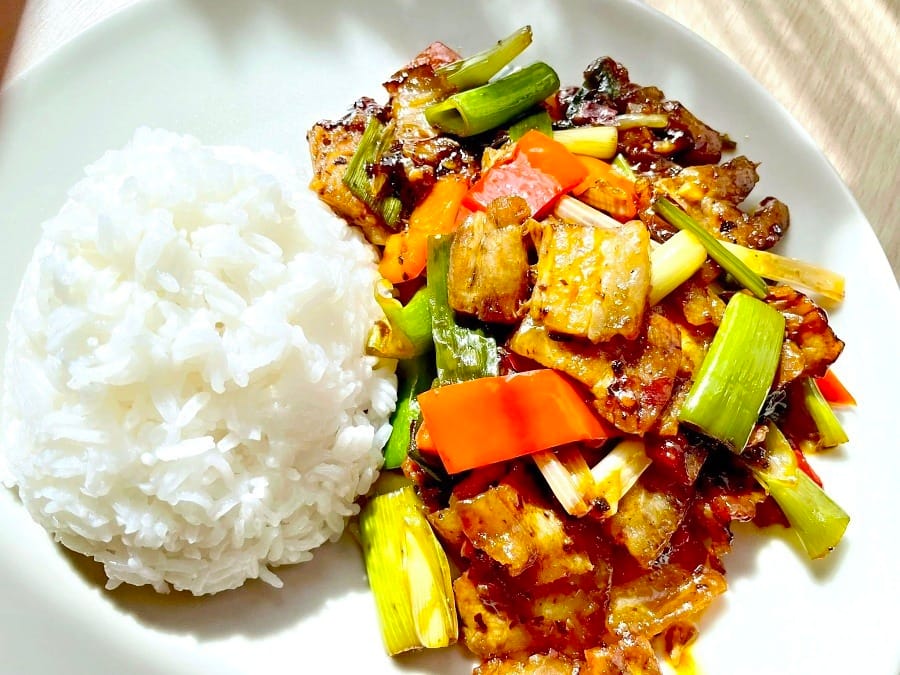
Preparation
The preparation of Hui Guo Rou involves two main steps. The first step is boiling the pork belly in water with spices. After boiling, the pork is allowed to cool and is then sliced into thin pieces. The second step involves stir-frying the meat in a wok with spices, vegetables, and chili peppers. Pork belly with a layer of fat and skin is ideal for this recipe, with a suggested 50/50 ratio of lean to fatty meat (ideally marbled). Some recipes also recommend adding douchi, which enhances the dish’s robust flavor.
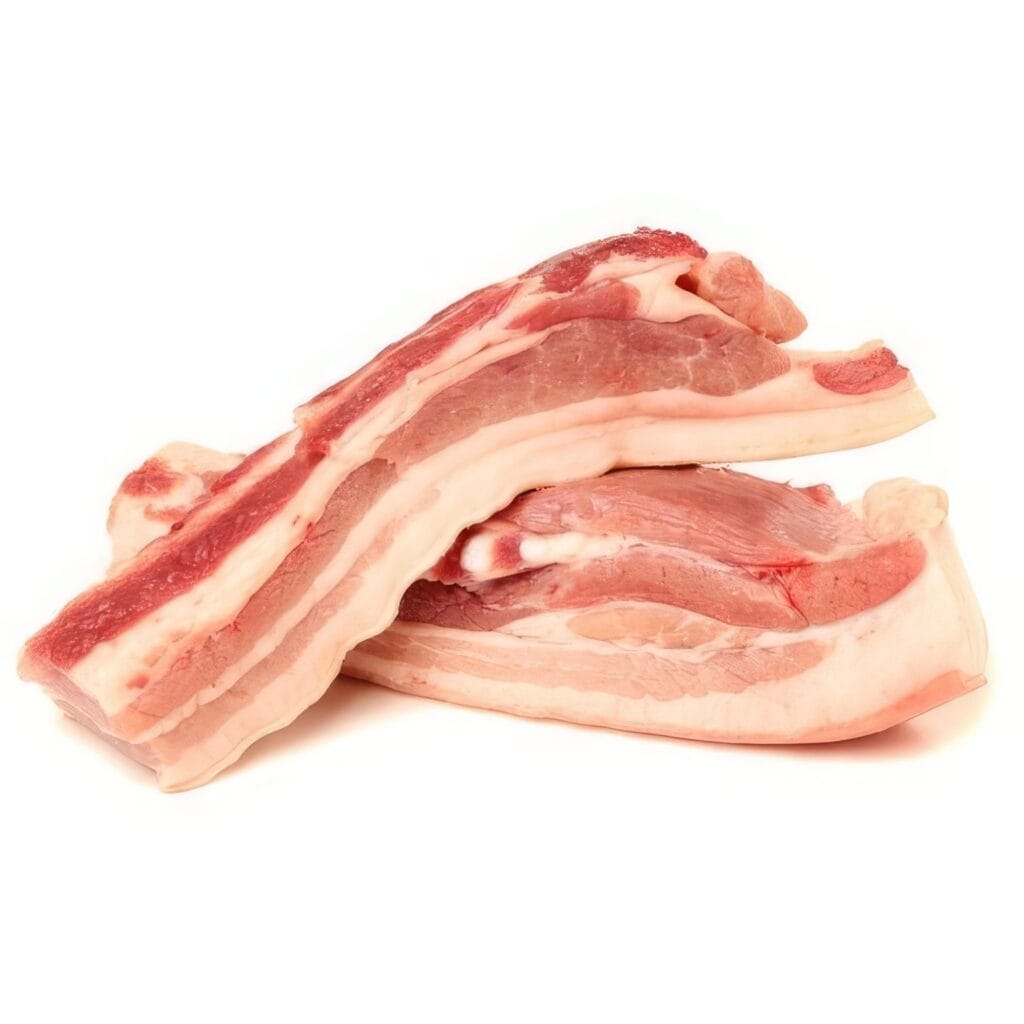
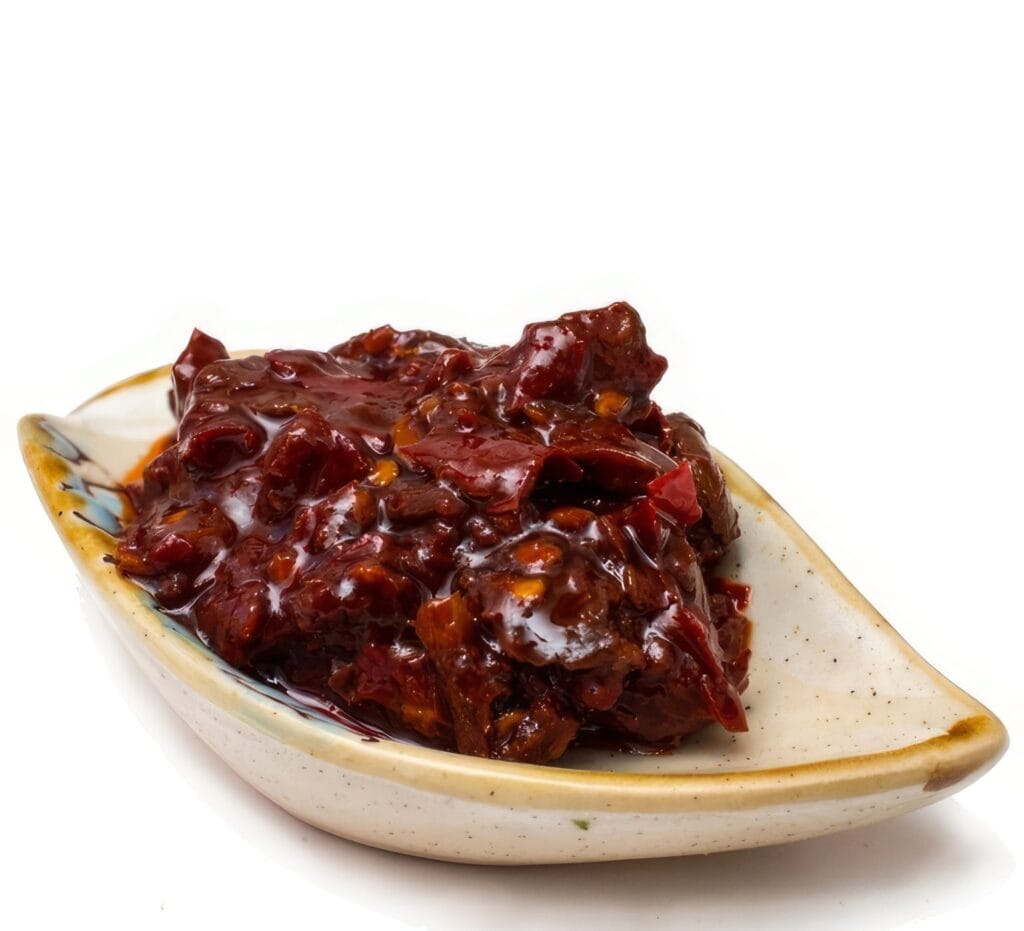
An authentic dish should be mildly sweet and spicy, with crunchy vegetable pieces and tender pork. It is essential not to remove all the fat from the meat, as the fat contributes to the dish’s rich flavor. Additionally, avoid overcooking the pork, as it will become chewy after frying.
Don’t be afraid to experiment with different ingredients and spices to tailor your Hui Guo Rou to your taste.
Twice-Cooked Pork Belly (回鍋肉 Huí Guō Ròu)
Ingredients
- 500 g pork belly
First Boil
- 1 tablespoon Sichuan peppercorns
- 2 spring onions
- 1 tablespoon rice wine
- 1 tablespoon water
Stir-Frying Ingredients
- 1 pcs bunch of spring onions cut into 1-2 cm pieces
- 2 pcs chili peppers
- 1 tablespoon cooking oil
- 3 cm ginger sliced
- 3 cloves garlic sliced
- 1 tablespoon rice wine
- 1 tablespoon doubanjiang spicy bean paste
- 2 teaspoons finely chopped douchi fermented black beans
- 1 tablespoon light soy sauce
- ½ teaspoon sugar
Instructions
- Place the pork belly, cut into larger pieces, into a large pot with enough cold water to fully submerge it. Add 2 spring onions, Sichuan peppercorns, and rice wine. Bring to a boil and cook for 15 to 20 minutes, until the skin softens. Remove the pork belly and set it aside to cool. Then place it in the refrigerator for several hours or in the freezer for 1 to 2 hours to firm up, making it easier to slice. Slice the pork belly into thin slices, 1–2 mm thick (similar to bacon slices).
- Heat about 1 teaspoon of oil in a wok (not too much, or the dish may become greasy) and fry the pork belly slices for 1–2 minutes, stirring and turning occasionally, until they lose their pink color and begin to curl.
- Remove the slices and leave only the oil in the wok. Fry the doubanjiang over low heat until the oil turns red. Add ginger, garlic, and spring onion and stir-fry until fragrant. Add the douchi and stir-fry for another 30 seconds.
- Add sugar, rice wine, and stir well. Return the pork belly slices to the wok, increase the heat, stir everything together, and add light soy sauce, fresh chili peppers, and the green parts of the spring onion. Mix everything well and serve immediately. This process should be quick to preserve the freshness of the dish.
- Serve with steamed rice.

